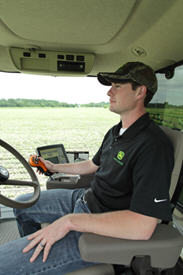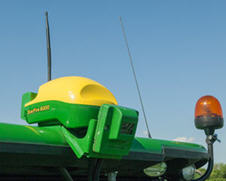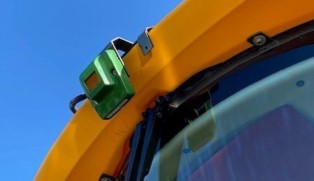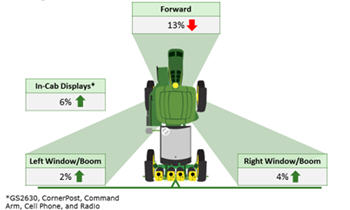AutoTrac Vision system
 Application operator using AutoTrac Vision following row crops
Application operator using AutoTrac Vision following row crops
You are accustomed to the benefits that AutoTrac provides. However, in some standing crop conditions, AutoTrac performance may be limited.
Examples include:
- Crops planted without AutoTrac
- Unavailability of guidance lines from planting
- Global positioning system (GPS) drift when using StarFire™ SF1 or SF2 corrections
- Strip-till and ridge-till conditions
In these conditions, AutoTrac Vision provides all the benefits of AutoTrac in post-emergence operations in corn, soybeans, and cotton. A monocular camera is used to detect crop rows and guide the vehicle through standing crop.
 Tractor with AutoTrac Vision
Tractor with AutoTrac Vision
 Hagie sprayer with AutoTrac Vision
Hagie sprayer with AutoTrac Vision
Operator benefits include:
- Reduced fatigue as manually driving in standing crop increases fatigue and mistakes
- Less crop damage due to a reduction of operator errors
- Higher speeds, thus increasing productivity. AutoTrac Vision can spray up to 20 percent faster compared to manual driving
- Increased focus on other key functions rather than focusing solely on steering
 Eye-tracking study shows less time looking forward with AutoTrac Vision
Eye-tracking study shows less time looking forward with AutoTrac Vision
Results from an in-field eye-tracking study indicate that operators with AutoTrac Vision spend 13 percent less time looking forward, allowing them to focus on in-field operations instead.